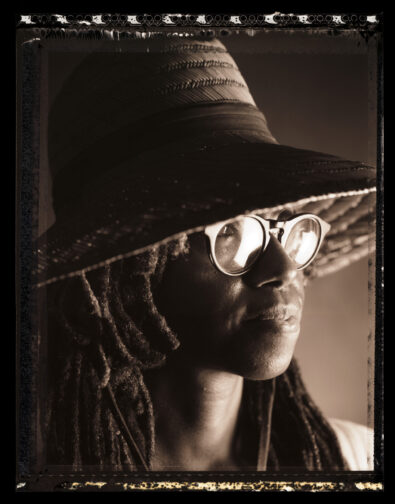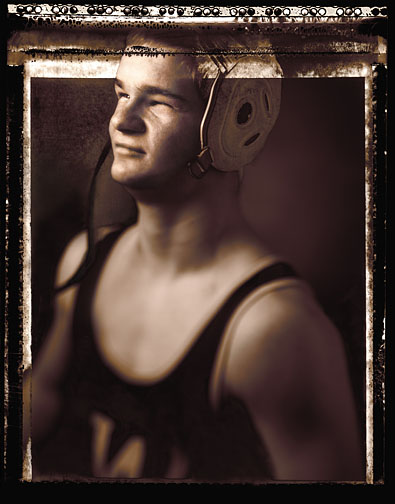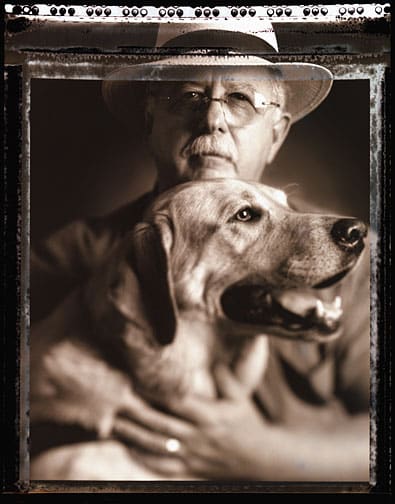Blind/Sight Exhibit
Conversations with the Visually Impaired
Blindness is not always darkness and darkness is not always lack of vision. In this exhibit you will meet 14 individuals who see the world not through their eyes, but from their hearts.
Blind/Sight, Conversations with the Visually Impaired, is a collection of photographs of CVI clients that have with vision loss. There is a biography and photograph of each person, a description of their vision (both in audio format as well as print), and (the most interesting segment) an illustration of what they actually see.
Blind/Sight premiered at the VSA Arts of Georgia gallery and the Fernbank Museum of Natural History and was created by photographer Billy Howard and illustrator Laurie Shock.
What does it mean to be blind, to have a visual impairment, not to see? We thought it was about darkness. It is not. It is about light, energy and the boundless creativity of the human mind to discover the world using all senses.
Each of us has a unique view of the world around us. The people documented in the Blind/Sight exhibit know that. They have discovered their own ways of seeing and only ask that you join their conversation. They have given us insight into what it is to see differently. And, while each has a diagnosis that lessens their physical sight, we found them all to have great vision.We all have different ways of seeing, the important thing, is that we listen.

Photography and stories
by Billy Howard

Illustrations and visual descriptions by Laurie Shock
The CVI Story
The organization now known as the Center for the Visually Impaired (CVI) was founded in 1962 by a group of parents concerned about how their blind children would live as independent adults. Led by George and Jean Henderson, the parents petitioned the State of Georgia to charter a new non-profit organization, Community Services for the Blind. The organization provided professional rehabilitation services to Atlanta area adults including mobility; communication skills such as braille, typing and telephone; social services; home management (for women only); grooming (for men only) and recreation. Seven clients were served in donated space in the Atlanta National Building at 50 Whitehall Street (now Peachtree Street) during the first year.
Today, CVI serves approximately 1,000 people of all ages each year. CVI’s staff of vision professionals teaches similar skills but now uses technologies and devices that could not have been imagined over 50 years ago. CVI client outcomes are excellent, and include successful academic performance, stable jobs, and involvement in their communities instead of isolation.
The programs of CVI include: support groups, the Florence Maxwell Low Vision clinic, New View adult rehabilitation services, STARS program for elementary to high school students, and BEGIN program for infants and children up to age five. CVI’s VisAbility Store carries products that help make life easier for people who are blind and visually impaired.
CVI has changed names and locations over the years, but its mission to empower people impacted by vision loss to live with independence and dignity has never waivered.
Thank you
The Blind/Sight exhibit premiered at the VSA Arts of Georgia gallery and the Fernbank Museum of Natural History in Atlanta. A copy of the original exhibit was made for the Phillips Eye Institute in Minneapolis, Minnesota. BlindSight.org was made possible by the generosity of a friend of the Center for the Visually Impaired.
CVI also extends special thanks to the following for making this exhibit possible: Bcauz Marketing; City of Atlanta, Office of Cultural Affairs; Digital Sidekicks; Elizabeth Firestone Graham Foundation; Exposition Foundation Inc.; Fulton County Arts Council; Georgia Council for the Arts Grassroots Arts Program; Georgia Radio Reading Service; JD Scott Photography; Jay Kelly Interactive; LUBO Fund; Ann-Laura Parks; Phillips Eye Institute; Resonance Marketing; Showcase Inc.; Toco Hill Picture Framing; David Woolf; and finally, thanks to Jaehn Clare for providing the audio descriptions.
Profiles
Cliff Hembree (with Sampson)
Trauma
Annie Maxwell
Blind from Birth with No Known Cause
Raina Hoffman
Albinism
George Guerrero, Jr.
Brain Tumors
Helen Trentadue
Macular Degeneration
Natelkka (Nikki) Frye
Cataracts, Detached Retinas
Mao Ueno
Neurofibromatosis
Ashley Whitley
Leber’s Congenital Amaurosis
Hal Westmoreland
Cytomegalovirus (CMV) Retinitis
and Cataracts
Luke Putney
Cerebral Aneurysm and Optic Nerve Atrophy
Phil Green
Retinitis Pigmentosa and
Macular Degeneration














